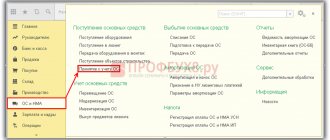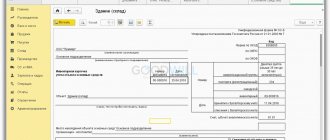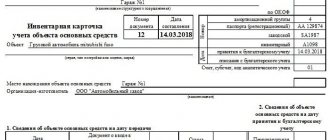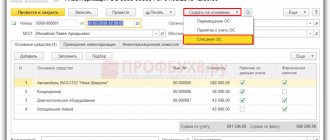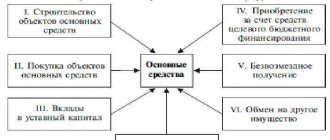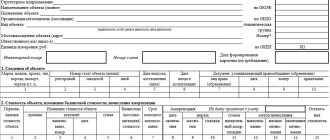L. M. Zolina author of the article, Ascon consultant on accounting and taxation
The wording of clause 2 of Order of the Ministry of Finance of Russia dated November 15, 2019 No. 180n “On approval of the Federal Accounting Standard FSBU 5/2019 “Inventories” (hereinafter referred to as the Standard) prescribes the application of the Standard starting with the accounting (financial) statements for 2021.
Some business entities read this paragraph literally like this: The standard requires application in accounting (financial) reporting. Therefore, all inventory restatements can be made as of December 31, 2021.
However, according to clause 3 of Order No. 180n, from January 1, 2021, not only PBU 5/01 “Accounting for inventories”, but a number of related regulatory documents are considered invalid.
Thus, FSBU 5/2019 should be applied from January 1, 2021.
But with regard to FSBU 6/2020, the situation is different.
Clause 2 of Order of the Ministry of Finance of Russia dated September 17, 2020 N 204n “On approval of Federal Accounting Standards FSBU 6/2020 “Fixed Assets” and FSBU 26/2020 “Capital Investments” establishes the mandatory application of FSBU 6/2020 starting with accounting (financial) statements for 2022. The organization may decide to apply these Standards before the specified date. But PBU 6/01 “Accounting for fixed assets” and the corresponding regulatory legal acts lose force from January 1, 2022 (clause 3 of FSBU 6/2020).
As a predictable result: a number of organizations switched to FSBU 5/2019 due to obligation, but postponed the application of FSBU 6/2020 for a year due to the opportunity provided.
I cannot comment on what goal the Russian Ministry of Finance pursued by giving business entities the opportunity not to apply FAS 6/2020 simultaneously with the start of application of FAS 5/2019. But officials do not comment on the consequences that arise in a number of situations in connection with the simultaneous application of FSB 5/2019 and PBU 6/01.
The most problematic is the accounting of assets, which according to FAS 5/2019 are no longer inventories, and according to PBU 6/01 are not yet fixed assets. At the same time, they are quite expensive and durable.
Example
Inventory with a useful life of more than 12 months cannot be counted as inventory. However, if an organization does not apply FAS 6/2020 from 01/01/2021, then it must keep records of fixed assets according to the norms of PBU 6/01, which provides a price limit for fixed assets - 40,000 rubles.
A situation arises when an asset worth less than 40,000 rubles, but with a fixed income of more than 12 months, cannot be taken into account as fixed assets according to PBU 6/01, and as inventories - according to FAS 5/2019.
Thus, when applying FAS 5/2019 and PBU 6/01 (before the transition to FAS 6/2020), assets are accounted for as follows:
1 - costing less than 40,000 rubles. and with a service life of less than 12 months - among stocks;
2 - costing more than 40,000 rubles. and a service life of less than 12 months - among stocks;
3 - costing more than 40,000 rubles. and a service life of more than 12 months - including OS;
4 - costing less than 40,000 rubles. and a service life of more than 12 months are among the assets whose value can be written off as of the date of their commissioning (to be approved in the Accounting Policy Regulations).
The first two conditions do not cause problems. For example, if a tool is purchased at a cost of 60,000 rubles, but the organization is sure that it will be completely worn out within 10 months, then it should be taken into account as part of inventories.
The third condition is also clear. This is PBU 6/01.
And I want to dwell on condition 4 in more detail. Inexpensive computer costing up to 40,000 rubles. will last more than one year, which means it’s not a stock. But it is not the main means according to PBU 6/01. And a whole group can accumulate such assets.
The situation when an organization applies FAS 5/2019 and does not apply FAS 6/2020 is not regulated by law. In this case, any transitional rules are not established by the current accounting regulations.
Having analyzed the current accounting provisions, I come to the conclusion that during this transition period it is possible to apply the principle of materiality to such assets and take into account their cost in expenses and the date of acquisition (and without a commissioning certificate).
However, it is necessary to be very careful in determining the level of materiality.
Fixed Asset Accounting
Fixed assets PBU 6/01 2021 is the main regulatory document that establishes the criteria, rules, conditions and current procedure for accounting for property assets included in fixed assets.
Let us remind you that not all property can be considered OS. It is the Accounting Regulations that establish the key points for determining the object. This standard was approved back in 2001 (Order of the Ministry of Finance No. 26n dated March 30, 2001). The last changes were made on May 16, 2016. All Russian organizations are required to use it for accounting and reporting purposes, starting in 2001. Everything except credit institutions, as well as state and municipal institutions.
Please note that different regulations apply to public sector institutions. Thus, on January 1, 2018, the new federal standard “Fixed Assets” came into force.
Accounting policy
It is impossible not to note that the new Federal Accounting Standards are based on the provisions of IFRS, and recommendations on their application are increasingly being given not by the Russian Ministry of Finance, but by the National Non-State Accounting Regulator “Accounting Methodological Center” Foundation (NRBU BMC).
The Fund regularly posts its Recommendations on the official website of the Accounting Methodological Center www.bmcenter.ru. Not being an official methodological body, NRBU BMC, however, today helps to adapt to the concepts of IFRS, since the new FAS, even if they are based on IFRS standards, do not provide explanations for their application, but only allow them to be used.
This primarily concerns the Accounting Policy Regulations.
The accounting policy of the organization must ensure rational accounting based on business conditions and the size of the organization, as well as based on the ratio of costs for generating information about a specific accounting object and the usefulness (value) of this information (the requirement of rationality) (clause 6 of the Accounting Regulations “Accounting policy of the organization” (PBU 1/2008), approved by Order of the Ministry of Finance of Russia dated October 6, 2008 N 106n).
The concept of “rationality” is absent in FSBU 5/2019. In this regard, I again recommend paying attention to the NRBU Recommendation BMC R-100/2019-KpR “Implementation of the rationality requirement.”
As a rule, the assessment of the potential impact that the use of a particular accounting method established by the FSB on the decisions of the user of financial statements may have is associated with specific circumstances. In this regard, the possibility of forming an accounting policy based on the requirement of rationality without using the method established by the FBU is usually determined based on the specific conditions of the reflected facts of economic life.
However, this statement is not true for all accounting methods provided for by the FSB. A number of accounting provisions contain requirements of a technical or formal nature, the implementation of which is not directly related to the generation of information included in the organization’s financial statements.
It is necessary to determine rational approaches to the formation of accounting policies regarding the application of the specified FAS standards in order to maintain an optimal balance between the costs of generating information about such an accounting object as fixed assets and the usefulness (value) of this information.
In 2021, the accounting provision PBU 1/2008 “Accounting Policy of an Organization” was supplemented with clause 7.4, which allows organizations to formulate accounting policies without using the accounting methods established by the FSB, to the extent that their use leads to the formation of immaterial information. In this case, immaterial information is understood as information, the presence, absence or method of reflection of which in the accounting (financial) statements of an organization does not affect the economic decisions of users of these statements.
Thus, on the basis of clause 7.4 of PBU 1/2008, an enterprise has the right to choose the method of accounting, guided solely by the requirement of rationality (without applying clauses 7, 7.1 of PBU 1/2008). The enterprise classifies information as non-essential independently, based on both its scale and its nature.
Content
The current PBU 18 “Fixed Assets” has the following structure:
| Section of the regulatory document | Contents, key aspects |
| General provisions | This section covers the following questions:
|
| Grade | The second chapter of the regulatory legal acts defines the following directions regarding the assessment of objects:
|
| Depreciation | The section reveals:
|
| Recovery | The chapter defines:
|
| Disposal | The section regulates:
|
| Disclosure of information in financial statements | This part of the PBU defines a key list of information requirements that must be disclosed in financial accounting statements in relation to fixed assets. |
Determining the level of materiality
The level of materiality is one of the most significant in accounting. It is an indicator within which deviation is not considered an error. In this regard, the level of materiality is equated to a possible acceptable error, at which the reporting is considered reliable. The organization determines the level of materiality independently and enshrines it in the accounting policy (paragraph 2 of clause 11 of PBU 4/99, clause 3 of Order of the Ministry of Finance of Russia dated July 2, 2010 N 66n, Letter of the Ministry of Finance of Russia dated January 24, 2011 N 07-02-18/01 (section “Materiality of information disclosed in financial statements”)).
The organization determines the materiality of the value of assets independently based on both the size and the nature of the corresponding article (articles) of the financial statements (clause 3 of the Accounting Regulations “Correcting Errors in Accounting and Reporting” (PBU 22/2010) (approved by Order of the Ministry of Finance Russia dated June 28, 2010 N 63n) (hereinafter referred to as PBU 22/2010)).
Please note that in practice, the level of materiality is set at up to 5 percent of income or expenses or up to 10 percent of a balance sheet item.
Example
According to FAS 5/2019, assets with a service life of more than 12 months must be taken into account as part of fixed assets, including workwear. Consequently, the level of materiality for these assets can be determined relative to the value of fixed assets on the balance sheet.
For example, the cost of fixed assets reflected in the balance sheet as of January 1, 2021 is 3,000,000 rubles. At a materiality level of 10%, the value of a group of assets not exceeding RUB 300,000 can be written off as expenses at a time. At the same time, it is unlawful to set the level of materiality for each asset in the amount of 10% of the value of fixed assets, since when writing off several assets with different values, each of which does not exceed 10% of the book value of fixed assets, in the aggregate for a year it can lead to exceeding the 10 percent level of materiality , and this will already be recognized as a mistake. Consequently, in the accounting policy it is necessary to establish the level of materiality for a group of assets and monitor its compliance.
At the same time, a one-time write-off of the cost of assets is an expense in accordance with the norms of PBU 10/99 “Organizational Expenses”.
Therefore, the level of materiality can be determined based on different indicators.
1st method: when establishing the level of materiality, it is possible to take the level of income (expenses) as a basis. The need to establish this indicator is contained in clause 18.1 of the Accounting Regulations “Income of the Organization” PBU 9/99 (approved by Order of the Ministry of Finance of Russia dated 05/06/1999 N 32n) and in clause 21.1 of the Accounting Regulations “Expenses of the Organization” PBU 10/ 99 (approved by Order of the Ministry of Finance of Russia dated May 6, 1999 N 33n). These documents require separately reflecting the organization’s income (expenses) exceeding 5 percent.
2nd method: when establishing the level of materiality, it is possible to focus on the rule for recognizing a gross violation of accounting requirements, enshrined in the Code of Administrative Offenses of the Russian Federation (Article 15.11 of the Code of Administrative Offenses of the Russian Federation). Thus, in the accounting policy it is possible to recognize that the level of materiality is at least 10 percent.
3rd method: it is possible to set the level of materiality depending on the specific weight of the balance sheet item; specific type of activity; depending on the specific case (see example above).
Guidelines for use
In addition to the PBU for fixed assets, officials developed and approved special guidelines for the application of current provisions. These regulatory legal acts are enshrined in Order of the Ministry of Finance 391n dated October 13, 2003.
This standard is considered in conjunction with existing PBUs. The content of the methodological recommendations addresses issues that are already taken into account in the current Regulations on fixed asset accounting. Officials also highlighted certain aspects in accounting that were not disclosed in the Regulations at the proper level. In addition, the methodological recommendations contain a large number of illustrative examples of depreciation calculations for individual categories of fixed assets.
FSBU 6/2020 - new procedure for accounting for fixed assets
Start and end dates for depreciation have been changed
According to PBU 6/01, the start and termination of depreciation is allowed only from the first day of the month of recognition (write-off) of an object (clause 21, clause 22 of PBU 6/01). According to FAS 6/2020, the start date of depreciation is the date of recognition in accounting.
For example, an organization accepted an asset for accounting on February 12. According to the rules of PBU 6/01, depreciation for this fixed asset in the amount of 1/12 of the annual amount of depreciation charges is charged from March 1 (that is, from the first day of the month following the month in which this object was accepted for accounting). It turns out that the OS object was already working in February (even if not for a full month), and its cost was not included in the cost of products (works, services) for February. According to the rules of FAS 6/2020, an organization may not wait until the beginning of the next month, but begin accruing depreciation from February 12 in proportion to its useful life. This ensures more accurate formation of production costs. In this case, it is permissible for an organization to decide to start accruing depreciation from the first day of the month following the month in which the fixed asset item was recognized in accounting. The date when depreciation of fixed assets ceases to be accrued is the moment it is written off from accounting. By decision of the organization, it is allowed to stop accruing depreciation from the first day of the month following the month the fixed asset item was written off from accounting (clause 33 of FSBU 6/2020). That is, now the organization has a choice on these dates. The previously used approach to determining the point at which depreciation begins and ends is also acceptable.
According to clause 30 of FAS 6/2020, depreciation on fixed assets is not suspended (including in cases of downtime or temporary cessation of use of fixed assets), except for the case when the liquidation value of an item of fixed assets becomes equal to or exceeds its book value. If subsequently the liquidation value of such an item of fixed assets becomes less than its book value, depreciation on it is resumed. In contrast to the new rules, PBU 6/01 stipulates the possibility of suspending the accrual of depreciation in the event that an asset is transferred by decision of the head of the organization to conservation for a period of more than 3 months, as well as during the period of restoration of the object, the duration of which exceeds 12 months (clause 23 of PBU 6/01).
Check the accuracy of accounting
We will help you find errors and reserves, eliminate risks and optimize work
Find out the cost of the audit
Innovations of Federal Law No. 402-FZ.
The following changes have been made to Federal Law No. 402-FZ:
- documents in the field of accounting regulation will include, among other things, regulations of the Central Bank of the Russian Federation (clause 2.1, clause 1, article 21);
- The FSB, regardless of the type of economic activity, establishes a chart of accounts and the procedure for its application, with the exception of charts of accounts for credit organizations and non-credit financial organizations and the procedure for their application (clause 3, clause 5, article 21);
- now charts of accounts for credit organizations and non-credit financial organizations and the procedure for their application, the procedure for reflecting individual accounting objects on the accounting accounts and grouping accounting accounts in accordance with the indicators of the accounting (financial) statements of credit organizations and non-credit financial organizations, disclosure forms information in the accounting (financial) statements of credit organizations and non-credit financial organizations is established by regulations of the Central Bank of the Russian Federation (clause 6 of Article 21);
- Corresponding changes regarding the powers of the Central Bank of the Russian Federation and regulatory acts were introduced in clause 15 of Art. 21 and paragraphs. 1 item 2 art. 23, and it is also indicated that the regulations of the Central Bank of the Russian Federation may conflict with federal standards (clause 1.1 of Article 30).
The above innovations do not affect the interests of commercial organizations that are not related to credit and non-credit financial institutions. But the following change made to Federal Law No. 402-FZ will certainly be important for these organizations: Art. 30 clause 1.1 has been added. Now the accounting regulations (PBU), approved by the Ministry of Finance in the period from October 1, 1998 until the entry into force of Federal Law No. 402-FZ - January 1, 2013, are recognized as federal standards. And if we take into account that after January 1, 2013, no new PBUs were adopted, all existing PBUs simultaneously became federal standards. The question arises: will truly new FSBUs be developed and adopted? More on this later.
